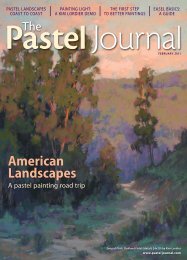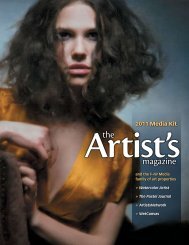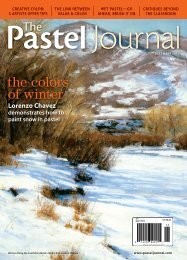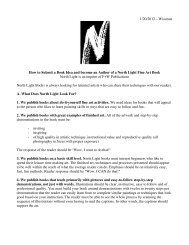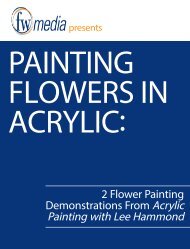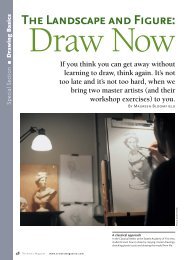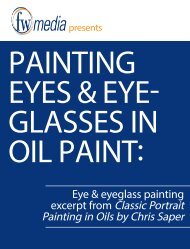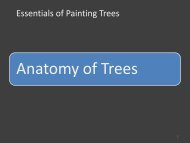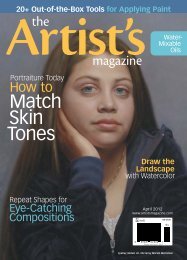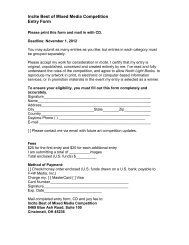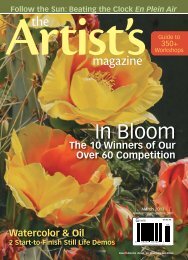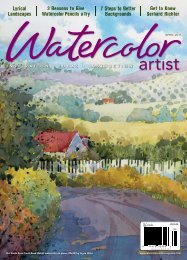The Artist's Magazine, January/February 2012 - Artist's Network
The Artist's Magazine, January/February 2012 - Artist's Network
The Artist's Magazine, January/February 2012 - Artist's Network
- No tags were found...
Create successful ePaper yourself
Turn your PDF publications into a flip-book with our unique Google optimized e-Paper software.
Turn ordinary cloth into stunning draperyanatomyby learning draw these seven folds.of afoldBY ROBERT T. BARRETTWHEN YOU LOOK at a piece of drapery, do youwonder how even to begin drawing all thosewrinkles? At first glance you may see onlymasses of unorganized forms in the clothes,curtains or piles of fabric, but you’ll soon discoverthese undulating folds have a beauty alltheir own. Just as it’s important to understandthe anatomy of the human body in order todraw it more successfully, it’s similarly importantto understand the anatomy of folds if youwant to draw them with understanding andconviction.Understanding Drapery<strong>The</strong> first step in drawing drapery is learningthe principles of fold construction: the effectsof gravity, the points of support (what holds upthe fabric), the tension (forms the fabric mustgo around) and the form underneath the fabric.You’ll notice that heavier material willdrape somewhat differently than lighter-weightmaterial in response to gravity. You may alsodiscover that, as you identifythe points of supportand tension, predictablefolds will consistentlyappear. As for the formunderneath the fabric,there’s often an interestingplay that developsbetween what the foldreveals or hides about thestructure underneath andhow the structure underneath helps determinethe individual fold. Of course, with clothing,the structure underneath is usually a body. Ina still life, the drapery may consist primarilyof irregular folds draping over several pointsOPPOSITE: Regardless of the fashionsof the day, whenever you’re drawinga clothed fi gure, you’re dealing withfolds. <strong>The</strong>y may not be as pronouncedin a simple top and jeans—what we seein A Moment of Reflection (pastel,30x22)—as with long, flowing skirts, butthey still exist. Drawing folds well helpsyou accurately describe fabric and, what’smore important, the subject underneath.<strong>January</strong>/<strong>February</strong> <strong>2012</strong>91



